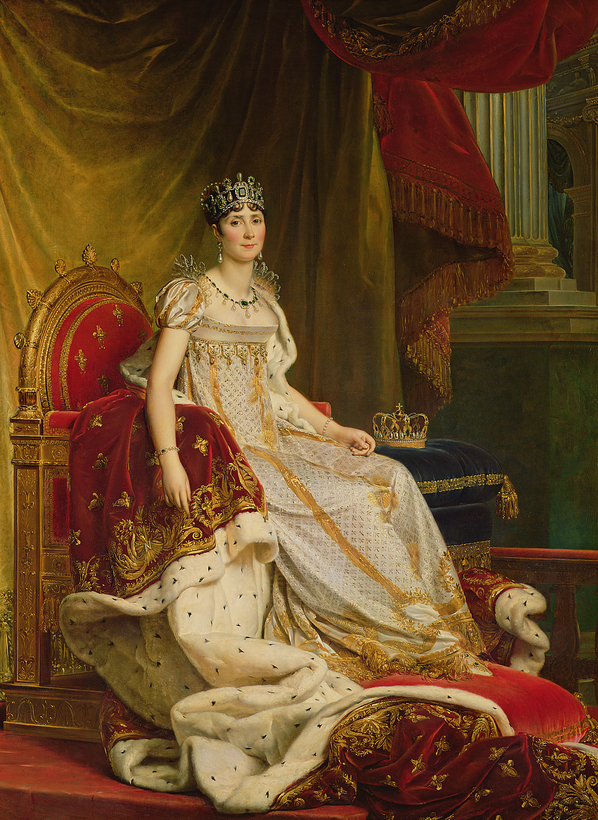She was an energetic 18th-century trendsetter—a dedicated follower of fashion, jewels, the horticulture of roses, and Napoleon. (Not necessarily in that order.) Empress Joséphine rose two hours earlier than Napoleon to make her toilette flawless before he woke. At various intervals throughout the day, she changed outfits, and from her 270 priceless parures locked in a vast bronze-and-gilt cabinet she chose the precious stones that best matched the color of the rooms where she would receive guests. Napoleon was determined his court would be the most glittering in the world, and she was his accomplished aide-de-camp.
“They were both extremely confident and ambitious,” says Pierre Branda, the historian and head of heritage for the Fondation Napoléon, in Paris. Branda is also the curator of “Joséphine et Napoléon, une Histoire (Extra)ordinaire,” on now at Chaumet Paris in honor of the bicentenary of Napoleon’s death. “Napoleon’s love for Joséphine was immediate and extremely strong, as we can see from their letters, which are the most intimate and beautifully written in the French language.” These letters will be among the 150 artworks, objects, jewels, and paintings, many hailing from private collections and on show for the first time, that comprise the exhibition.

Objects illustrate Joséphine and Napoleon’s early romance during the 19th century’s Directory and Consulate periods, including sentimental pieces, such as Joséphine’s velvet-lined wedding casket and wooden “mailbox,” complete with secret hidden lock. Others, such as a drawing by Jacques-Louis David that shows Napoleon crowning himself, recall the young emperor’s assumption of the throne.
Then there are the many pieces Napoleon commissioned from his “court” jeweler, including a pair of acrostic-style bracelets, lent to him by the Queen of Denmark, spelling out the names of Joséphine’s children, Hortense and Eugène, using the initial letters of precious stones.

Asked to name the exhibition’s star piece, Branda doesn’t hesitate: it’s a diamond-set diadem of wheat made by the jeweler Nitot & Fils, which later became the storied Paris jeweler Chaumet. “Marie-Étienne Nitot was witness to their love story,” says Branda.
Waging romance with Joséphine was Napoleon’s love story; his military life, meanwhile, is explored across town in another new exhibition, “Napoléon,” opening May 28 at the Grande Halle de la Villette. Some of the emperor’s personal items will be on show there, as well as his spectacular campaign tent with its original furnishings, cannon, and an ammunition crate. A short animated film directed by Mathieu Glissant will illustrate one of Napoleon’s most famous cavalry charges. Here, too, there is ample decorative evidence of Napoleon and Joséphine’s court life and the lasting impact the two have had on Paris as a center of fashion, jewels, and luxury goods. —Carol Woolton


 Discover
Discover